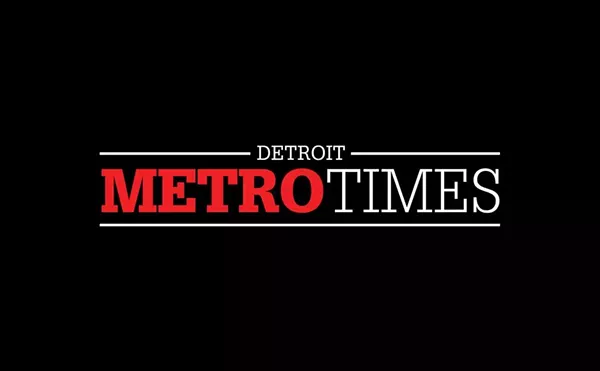
Audio By Carbonatix
[
{
"name": "GPT - Leaderboard - Inline - Content",
"component": "35519556",
"insertPoint": "5th",
"startingPoint": "3",
"requiredCountToDisplay": "3",
"maxInsertions": 100,
"adList": [
{
"adPreset": "LeaderboardInline"
}
]
}
]
It seems like a no-brainer for the Detroit City Council. If downtown property owners want to tax themselves an additional $3 million per year to clean sidewalks, remove graffiti, add landscaping and provide uniformed “ambassadors” who will roam the streets greeting visitors, why stop them?
The plan has the support of major business groups ranging from the Chamber of Commerce to Detroit Renaissance. It also has the support of Mayor Kwame Kilpatrick, who, while still a state representative in the Michigan House, co-sponsored the legislation that made establishment of such a district possible.
Linda Bade, president of Downtown Detroit Inc., a nonprofit that is the prime force promoting creation of the business improvement district (BID), says the effort is designed to enhance, not supplant, existing city services. She also says that the district, if created, would simply be “part of a pretty intense puzzle of programs aimed at revitalizing the downtown.”
In particular, she says, the BID would “promote a pedestrian environment,” helping to bring more people downtown to eat, drink and shop.
But critics say that, despite the broad support, this initiative has the potential to hurt many of the businesses it is supposed to help. In their view, the attempt to spruce up downtown’s image will be counterproductive, adding an additional financial burden to small businesses already struggling to survive.
In late September, property owners moved the idea forward by overwhelmingly voting in favor of the proposal. Now the City Council must vote on the plan. If council gives a thumbs-up, the matter goes back to property owners — 60 percent of whom must approve the plan for it to finally pass.
But it’s not exactly a situation of “one man, one vote.” Far from it. The decision-making is weighted so that large property owners hold greater sway. The vote is actually considered two ways, on both a property’s assessed value and its taxable value. Both categories are tallied for the entire district, and then each property owner’s vote is based on their percentage of the whole. That means the vote of a heavy hitter such as General Motors, which owns the Renaissance Center — and which is a proponent of the plan — carries far more significance than, say, a parking lot owner. In fact, the voting is even more skewed in favor of a GM because the 4.2 mill assessment (1 mill equals $1 per $1,000 of taxable property value) it would pay is cut in half past the $30 million mark. But its percentage of the vote is based upon its property’s full value. Assessments will range from $325,000 on a single property down to $68. No single property can wield more than 25 percent of the total vote.
In the September vote, property owners approved establishing a BID by a margin of more than 80 percent. The BID would remain in place for seven years, with a new vote required for it to be extended. It would collect more than $3 million per year from property owners within the district, with the program overseen by a 15-member board of directors. One director would be appointed by the mayor, the remainder would be composed of property owners.
Excluded from the tax if approved are government-owned properties and land owned by nonprofits, as well as residential property. That would include big players such as Blue Cross/Blue Shield. However, Detroit Downtown Inc., the nonprofit business group pushing the BID and angling to get the contract to oversee the program if approved, says it is negotiating with exempt property owners in an attempt to get them to voluntarily contribute.
Also exempt are Ford Field and Comerica Park, which are located on city-owned land. The BID district was also drawn to specifically exclude the area on Woodward across from the stadiums — property, including the Fox Theatre and other businesses, largely controlled by Tigers owner Mike Ilitch. That land was excluded, says DDI President Linda Bade, because Ilitch already performs many of the services the business improvement district would provide.
And then there are people like Ann Gail, a downtown business owner who has no vote at all, because she owns no property downtown. She rents space in the Penobscot Building for an office supply store that her family has owned for 75 years. Gail is concerned that businesses such as hers will suffer the most if the BID is enacted.
Her complaint is that the assessment will almost certainly be passed from building owners to renters, which means that businesses like hers that don’t have huge profit margins will have to contend with an additional burden.
No one can accuse Gail of crying wolf when declaring that many small downtown businesses hang by a tenuous thread. She told Metro Times last week that it wouldn’t take the BID to force her business under; unable to make rent payments, preparations are under way to close her Detroit store. Nonetheless, she plans to speak out against the proposal when the City Council holds a public hearing (as yet unscheduled) on the issue.
“If this passes, I think there will be a lot of businesses closing,” predicts Gail. “Small landlords are already working hard to keep the people they have. This will only make it more costly for people who own businesses downtown.”
Peter Conkey, president of Chicago-based HDC Partners, which owns the Buhl Building at Congress and Griswold, also opposes the plan. The BID would cost his partnership about $65,000 per year, says Conkey. That expense will be passed on to tenants.
Conkey’s view — one based in large part on interviews with departing tenants — is that the BID fails to address the real reasons vacancy rates are so high in downtown buildings.
“If you talk to folks leaving downtown, you are not going to hear that they are leaving because the streets aren’t clean enough. That’s not at the heart of the problem,” says Conkey. “The two biggest concerns are parking and taxes.”
“Detroit is the most challenged office market in the country,” he adds. “This city has enormous challenges to overcome. At this point in its revival, it cannot afford to undertake an expenditure like a BID.”
Despite the fact that there are 1,000 to 2,000 BIDs in other U.S. cities, there has never been a comprehensive study into what their actual economic impact is, says Larry Molnar, a professor at the University of Michigan. However, from the reports he hears at conferences and business gatherings, BIDs are producing positive results.
“BIDs have been highly successful in revitalizing [a number of] urban areas,” says Molnar.
“They do cost money,” he observes. “But what’s the option, to see continued decline?”
BIDs, he contends, have a proven track record of helping breathe new economic life into depressed core areas.
“I suspect it’s a mixed bag,” says City Council President Maryann Mahaffey. “BIDs have been highly praised in other cities for what they have done. But I know that there will also be people who say that we don’t need it, that what we really need are more police or other things. I suspect that it will probably go through, but we need to look at it closely.”
Curt Guyette is Metro Times news editor. Contact him at 313-202-8004 or cguyette@metrotimes.com




